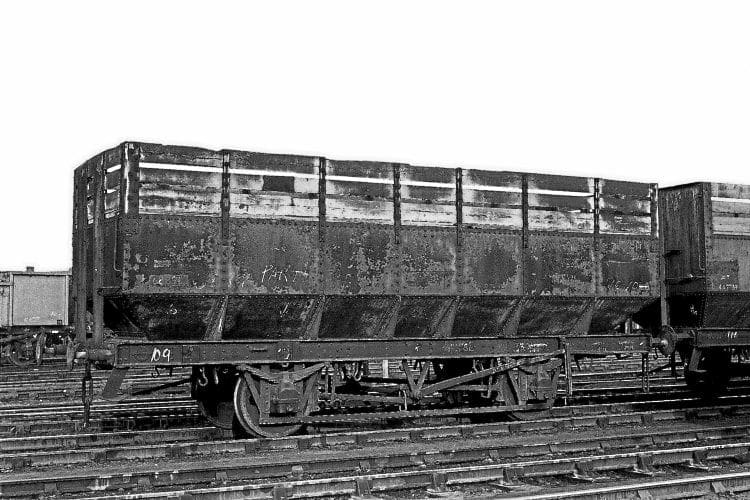To coincide with the release of the new Hornby models, Trevor Mann describes the history of the coke hoppers, these evolving from a private owner design to one built by the LMS and BR. With examples remaining in traffic until the early 1980s, modified and converted examples are also examined.

The origins of the British Railways 20-ton hopper coke wagon can be traced back to the late-1920s when, following evaluation of a prototype vehicle, the Appleby Iron Company and the Frodingham Iron & Steel Company both ordered fleets. The two firms were subsidiaries of the United Steel Companies Ltd with each ordering 100 coke wagons to supply their expanding Scunthorpe iron and steel plants.
The new design was clearly a success as 300 wagons of an identical style were constructed for the Stanton Ironworks Company during 1932, with a further 140 examples being added to the company’s fleet at the height of the Second World War. Details of these privately-owned vehicles are provided in Table 1.
Enjoy more Rail Express Magazine reading every month.
Click here to subscribe & save.
The design was also adopted by the London Midland & Scottish Railway, with 100 wagons being ordered in 1930 and an additional 100 following five years later. The LMS construction programme is detailed in Table 2.
Some 841 examples of the 20-ton hopper coke wagon had therefore been built prior to the Nationalisation of the railways. While a small number may have been written off in mishaps or as the result of enemy action during the Second World War, the vast majority will have passed into British Railways ownership in 1948.
Examples inherited from the LMS were absorbed into the BR fleet by the simple addition of a ‘M’ prefix to their existing number but the ex privately-owned wagons were fully re-numbered, effectively at random, into a newly-created ‘P’-prefixed number series.
Read more in February’s issue of RE – out now




